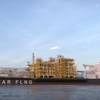A slowdown in fleet growth should begin the recovery cycle from the second half of 2018, although freight rates will not reach the levels seen during the bull run of 2014-15, according to the latest edition of the LPG Forecaster published by global shipping consultancy Drewry.
2017 was one of the toughest years in the history for VLGC shipping as ample vessel supply squeezed the freight market. VLGC earnings in the spot market (on the benchmark AG-Japan route) averaged $12,500pd; way below the break-even rate of $21,000pd.
Shipowners are hoping for a better future as annual fleet growth is set to slow down from 16% in 2016-17 to a more manageable 5% over 2018-19. However, new ordering is also picking up, with seven VLGCs ordered in the first month of 2018 as owners look to position themselves for the next upswing in the freight cycle.
The above figure depicts Drewry’s freight rate forecast for VLGCs over the next three years, with rates improving from this year and strengthening further in 2019-20. However, rates are unlikely to touch the highs seen in 2014-15 when the bull run was led by a sudden pick-up in propane demand from new PDH plants in China. China already has its eight PDH plants up and running, and only two more plants are due to come on line in 2019. That will prevent any sudden spike in the country’s imports.
“Our outlook for 2018-20 suggests an average freight rate of $23,400pd, below the $28,800pd that was recorded between 2011 and 2013,” commented Shresth Sharma, senior analyst for gas shipping at Drewry.
Shresth added: “The reason for the difference between average historical and future rates is that VLGC fleet ownership has become more fragmented since 2013 as many new players entered the market during the boom period of 2014-15. For instance, at the end of 2017, there were 62 companies in the VLGC sector, 17% more than at the end of 2013. It goes without saying that fragmentation tends to reduce the bargaining power of shipowners with charterers.”













